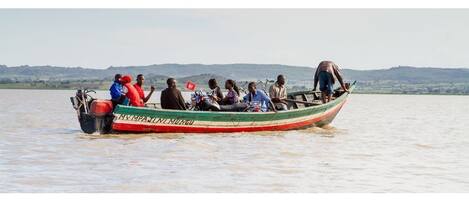Tanzania is home to some of the most incredible tribal diversity in Africa. The country includes all of the major ethnic and linguistic groups on the continent an amazingly varied population to inhabit a single country.
Home to approximately 120 tribal groups, most of these comprise small communities that are gradually being assimilated into the larger population due to changes in land use and the economic draw of city life. Tribal diversity is prized and far from being a source of division, Tanzanians place a high value on their countrys multicultural heritage.
Over the past few years, cultural tourism has become an increasing attraction for visitors from around the world and visits to tribal villages are often a highlight of safari itineraries. The Masaai are perhaps the most well known of Tanzanias tribes and inhabit the northern regions of the country. Pastoralists who fiercely guard their culture and traditions, Masaai tribal life revolves around protecting and caring for their herds of cattle and finding ample grazing land in their region.
The tribes live in circular enclosures called manyatas, where small mud huts surround a secure open circle where their cattle and other herd animals sleep protected during the night. Woven thorn bushes form a thick fence around the enclosure to protect the herds from attacks by lions and other predators. Because good grazing land fluctuates according to the seasons and yearly rains,
Masaai settlements are temporary and easily relocated to where grazing and water access is best. Tribal tradition separates men and women into different age groups: the youngest herd sheep and goats while the young male warriors, or morans, job is to protect and care for their familys cattle.







